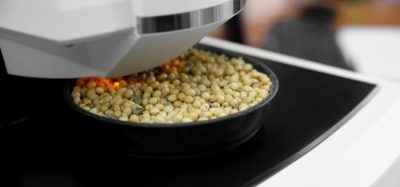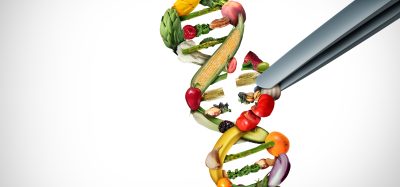How to ensure hygienic design in projects?
- Like
- Digg
- Del
- Tumblr
- VKontakte
- Buffer
- Love This
- Odnoklassniki
- Meneame
- Blogger
- Amazon
- Yahoo Mail
- Gmail
- AOL
- Newsvine
- HackerNews
- Evernote
- MySpace
- Mail.ru
- Viadeo
- Line
- Comments
- Yummly
- SMS
- Viber
- Telegram
- Subscribe
- Skype
- Facebook Messenger
- Kakao
- LiveJournal
- Yammer
- Edgar
- Fintel
- Mix
- Instapaper
- Copy Link
Posted: 12 December 2009 | Dirk Nikoleiski, Quality Manager, Kraft Foods R&D | 1 comment
Launching new products that require new process lines, a facility expansion or even a new plant at a new location are challenging and complex endeavours in the food industry. An example situation and flow might be as follows:
Launching new products that require new process lines, a facility expansion or even a new plant at a new location are challenging and complex endeavours in the food industry. An example situation and flow might be as follows:
Launching new products that require new process lines, a facility expansion or even a new plant at a new location are challenging and complex endeavours in the food industry. An example situation and flow might be as follows:
- The Marketing Department has an idea for a new product and request new product development
- R&D develops a new product and process to satisfy the Marketing request
- Engineering gets information from R&D and design and install new processing lines – all good so far!
- Manufacturing attempt a flawless start up to make product available for the new product introduction. Always flawless?
- Sanitation now gets involved to clean the line and are surprised at the difficulty and length of time it takes to clean the line. Manufacturing is concerned with this
- The Quality Department expresses concern that hygienic design is lacking and is requesting comprehensive and most likely expensive changes to newly installed equipment and infrastructure. Sound familiar?
A closer look
So let’s have a closer look at hygienic design. Actually, it is much more than bright and shiny stainless steel installations in a facility, but it isn’t a new science either. It’s the application of design techniques that allow for all assets to be cleaned effectively and efficiently in order to minimise the risk of any kind of hazards. Thus, it can be considered a prerequisite program within a robust HACCP program and its importance should be recognised by all stakeholders as such. The application of appropriate standards and best practices specific to the sensitivity of products and processes should not be negotiable.
Hygienic design is not limited to equipment. The building design and infrastructure must be considered as well. An appropriate zoning for segregating different hygiene areas much be taken into account as well as traffic patterns for employees, raw materials and finished product.
Food manufacturing equipment should be designed and constructed to meet the requirements specific to the type, nature and robustness of the product. As an example, bakery and dairy equipment usually have different levels of hygienic design expectations, as the food safety risk is not the same. It also must be noted that equipment designed for sensitive products with a high level design standard but used for manufacturing low risk products should be avoided as this is not cost effective.
Know where to start
Stakeholders who design equipment must know applicable regulations, laws, standards and guidelines and understand their scope, but also their limitations. In Europe, most of the locally applied laws and standards have been replaced by European Directives, Regulations and Norms. European Directives are community law for general, technology-neutral principles in the member states. Individual member states are responsible for the enforcement of the Directives. Although they are mandatory and legally binding, Directives are not directly applicable, whereas EU regulations are.
Within the Machinery Directive 2006/42/EC, fundamental requirements are laid down in view of health and safety risks in relation to design and manufacture. The Machinery Directive makes it a legal obligation that all machinery sold within the European Union must comply with safety and basic hygiene aspects. Compliance is shown accordingly with the ‘CE’ mark.
A risk assessment is mandatory to determine the health and safety requirements for specific machineries. In reality, safety aspects of the Directive, for example emergency stops, ergonomics, mechanical strength, noise emission, etc., are probably better known than its hygienic design principles. Therefore, food manufacturers should never rely on a CE mark only in view of hygiene, as equipment manufacturers actually are not aware of that by affixing the mark, they confirm compliance not only with safety requirements, but also with hygienic design.
In fact, the section covering hygienic design is relatively short. The requirements laid down for foodstuffs machinery and – interestingly without differentiation – cosmetics or pharmaceutical products cover the following key principles:
- Design and construction must ensure any risk of infection, sickness or contagion is avoided
- Food contact materials shall satisfy the requirements laid down in other Directives (e.g. Directive 2007/19/EC for plastics in food contact). In other words: food contact materials must be compatible to the foodstuffs and cleaning chemicals. They shall be non-toxic, non-tainting, non-absorbent and resistant to abrasion, cracking, chipping, flaking and corrosion
- Food contact materials and surfaces must be cleanable before each use, if materials are not disposable
- All food contact surfaces and their joining must be smooth without ridges or crevices
- For all food contact surfaces projections, edges and recesses must be minimised
- All food contact surfaces must be easily cleaned and disinfected where required after removing easily dismantled parts
- Inner surfaces in the food contact areas must have sufficient radii to allow thorough cleaning
- Design and construction must ensure liquids, gases and aerosols deriving from foodstuffs or cleaning can be discharged, if possible in a cleaning or draining position (self draining)
- Design and construction must prevent any substances or living creatures can accumulate or enter the machinery (no harbourage areas)
- Per design the machinery shall prevent any hazardous substances (e.g. lubricants) can come into contact with foodstuffs. Where necessary, design and construction must allow the compliance can be verified
- Recommendations on applicable cleaning and disinfection chemicals and procedures must be provided with the instructions for the machinery
Examples for directly applicable Regulations relative to hygienic design are the EC Regulation 852/2004 (General Food Hygiene) or the EC Regulation 1935/2004 (Food Contact Materials).
The European Norms EN 14159 and EN 1672-2 have been issued to detail the Machinery Directive. Though providing more details, the Norms are also very generic and based on the common design principles as laid down with the Machinery Directive. Additionally, a number of sector specific standards on bakery, meat, dairy equipment and other business have been issued. It must be noted that only standards identified by the abbreviation ‘EN’ are mandatorily respected in the EU, other standards are voluntary and must be included in the contract between equipment supplier and food manufacturer, if considered necessary and applicable.
Besides legally binding Directives, Regulations and Norms and specific local standards, a great number of guidelines and accepted practices are published in Europe and internationally. The European Hygienic Engineering and Design Group (EHEDG) have issued several guidelines to close the gap to the above mentioned Norms and the Machinery Directive. For example, the guideline No. 8, Hygienic Equipment Design Criteria, is available as a free download from the EHEDG web site. Hygienic design of equipment (or parts of it) can be assessed and the cleanability of the equipment can be tested based on an EHEDG test protocol, if there will be a wet cleaning regime for the machinery. Such standardised tests identify weak points in the design, including places where product residues may accumulate or where microbes may grow out during prolonged production run times.
Standards or norms usually refer to devices or components. However, the integration of components to complex food manufacturing systems must be taken into consideration as well.
Having said this, how can it be ensured that appropriate hygienic design principles are applied that meet the requirements? Food manufacturers are accustomed to manage risks based on HACCP principles including assessment, verification and validation of systems. On the other hand, equipment manufacturers must ensure that their machinery does not pose a health or safety risk. That means both equipment manufacturers and the food producers have an obligation to minimise risks and a joint approach is the most effective way to get good results. Therefore, the concept is to connect these dots.
According to the EN 1672-2, the equipment manufacturer is obliged to estimate, evaluate and minimise the risk associated with the equipment in order to make sure the machinery is appropriate for its intended use. However, there are many factors which may have an impact on product attributes such as: recipe, processing steps or consumption behaviours. Not all these are usually known by the equipment manufacturer and they may not be able to conduct a reasonable assessment and give appropriate ratings. There isn’t one function or manufacturer who is aware of the complexity and knows all. However, there is extensive knowledge and experience on the customer’s end, i.e. the food manufacturing companies. To enable these resources, a communication process that allows for a cross functional team, consisting of designers, engineers, quality staff and operators (the actual customers!) can work out the ideal design without compromising food safety and product quality. Experts from both sides, the food industry and OEMs, should define early on during a project life cycle the requirements and develop specifications based on that. Once in agreement on the specifications, the hygienic design aspects should be reviewed constantly at all project stages later on until the factory acceptance test and equipment validations.
Checklists to evaluate equipment
Hygienic design reviews at all relevant project stages using a very simple checklist based on design principles is a powerful and easy to use tool. Hygienic design solutions to minimise risks as well as the most cost effective design to maintain the defined hygiene level can be identified early on. The American Meat Institute (AMI) has published, for example, on their web site checklists for equipment and facility design. Questions shall be answered with yes, no or not applicable. A question answered with a no would mean the design as planned does not fulfil hygiene aspects and require workarounds or alternative solutions. The key aspects based on 10 design principles covered by the AMI checklist is very similar to those laid down in the Machinery Directive or the Norm 1672-2 and may serve as the basis for a tailor made, sector specific checklist. An action register and a sign off after each review are recommended to be part of the documentation. A similar check list based on the AMI check list is available for dry products from the Grocery Manufacturers Association.
Review in design at various phases
The first review should be after or during the concept development or design phase already. Drawings of the equipment might be useful or, even more powerful, an initial examination of an already existing or similar installation. If necessary changes are addressed before construction is started, cost impacts (if they are any at all) caused by design improvements can be minimised. The reviews should be repeated as appropriate throughout all project stages until the equipment is finally installed and started up on site. Criteria for a hygienic installation should be included in the discussions as well. Sufficient clearance underneath, above and around the installation will ensure accessibility for cleaning, inspection and maintenance. Likewise shall ancillary equipment, utilities, control cabinets, etc. comply with hygienic design and installation principles. Integrated, complex systems, like CIP installations, should undergo deep tear down inspections as part of the entire validation process during test runs.
Training is critical
One very important prerequisite is training: only trained stakeholders who have a clear understanding what hygienic design is about are able to speak the same language and can deal with this outcome based approach. Training courses, as offered for example by EHEDG, can provide the needed tools and knowledge to establish an appropriate hygienic design review process for new installations, as well as continuously improve existing ones. Key stakeholders from both parties, the equipment manufacturers and the food manufacturers being involved in planning, design, cleaning and inspection of food manufacturing machinery shall be appropriately trained. Refresher trainings should be done on a regular basis.
Summary
In summary, hygienic design must be demanded by the customers, i.e. food producers. Equipment manufacturers and food producers should have a constructive dialogue based on hygienic design requirements early on in projects and establish an effective and efficient sanitary design review process. The reviews shall cover key aspect based on legal requirements and accepted best practices. Individuals involved in this dialogue must be appropriately trained.










This article was witten in 2009 an is so up-to-date!
Food manufactures are the ones responsible for pushing the entire chain and in 2020 there are gaps on knowledge. The new GFSI guidelines will bring the possibility of certification of food equipment manufacturers as well as building constructors.